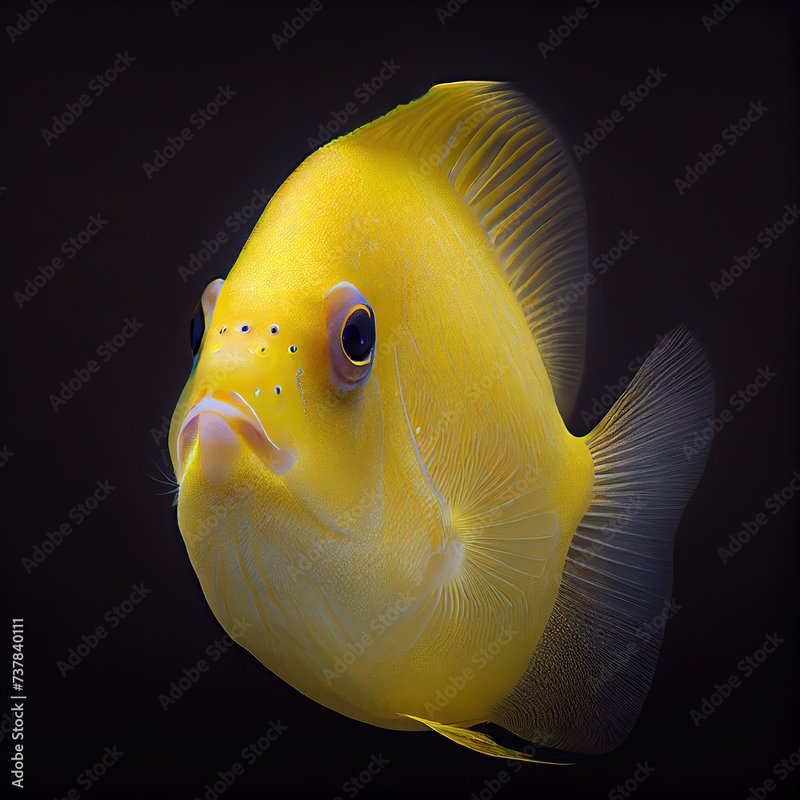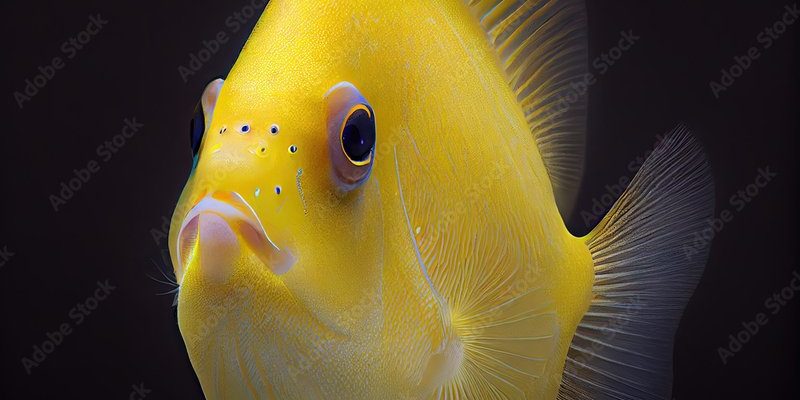
Imagine diving into a coral reef. You’d see yellow tangs darting around, nibbling on algae. They’re not just pretty faces; they have unique personalities and social dynamics that make them a joy—and sometimes a challenge—to keep. In this article, we’ll explore the behavior patterns and temperament of the yellow tang, giving you a clear picture of what to expect when you welcome one into your aquarium.
What Makes Yellow Tangs Unique?
Yellow tangs (Zebrasoma flavescens) come from the warm waters of the Pacific Ocean, particularly around Hawaii. Their vibrant yellow color comes from a special pigment that enhances their appearance, especially in the blue depths of the ocean. But there’s more to them than just good looks!
These fish are herbivores, meaning they primarily eat algae. In their natural habitat, they play an important role in maintaining the health of coral reefs. By eating algae, they help prevent overgrowth that can smother corals and disrupt the delicate ecosystem. Imagine them as little gardeners, tirelessly trimming the landscape to keep it healthy and vibrant.
In the aquarium, their diet is just as important. Providing a mix of algae-based foods and greens like spirulina helps keep them healthy and content. You might be wondering, “Does that make them picky eaters?” Not really! They’re generally quite adaptable, which is a plus for both beginner and experienced aquarists.
Social Behavior of Yellow Tangs
Yellow tangs are known for their social nature. In the wild, they often swim in groups, enjoying the company of their fellow tangs. This camaraderie is beneficial; it offers safety in numbers and a chance to forage for food together. However, it’s important to recognize that not all fish get along.
In a home aquarium, they tend to establish a hierarchy. A single yellow tang usually does well, but if you introduce multiple tangs, be ready for some skirmishes. They can be territorial, especially if they’re of similar size. It’s like a dance where each fish tries to assert its dominance without causing serious harm. To ease tensions, consider adding them to the aquarium at the same time, as this promotes a more peaceful integration.
You might also notice that yellow tangs are curious. They often explore their surroundings, poking around rocks and corals. This behavior means they like to have hiding spots and plenty of swim space to feel safe and secure.
Temperament: The Good and the Challenging
While yellow tangs are generally friendly, their temperament can vary. Some are curious and social, while others may be more reserved or territorial. Here’s the thing: personality can change based on their environment. If they feel threatened, their behavior might shift from playful to skittish.
Another aspect of their temperament is their need for space. Yellow tangs are active swimmers, so a tank that’s too small can lead to stress and aggression. A 75-gallon tank or larger is recommended for these vibrant fish. It’s essential to create a stress-free environment by including plenty of hiding spots and open swimming areas.
If you’re observing aggressive behavior—like constant chasing or nipping—don’t panic. Sometimes, this is part of establishing dominance. However, if the aggression escalates, consider rearranging the tank or using a bigger tank to help diffuse tensions. Giving them space can make a world of difference.
Feeding Habits and Their Impact on Behavior
As herbivores, yellow tangs have specific dietary needs that heavily influence their behavior. Their penchant for algae means they’re always on the lookout for food. In a well-maintained tank, they can often graze throughout the day, keeping them busy and happy.
Offering a varied diet is crucial. Think of it as providing a balanced meal plan. Their diet should include high-quality flake or pellet foods, along with fresh seaweed sheets. You can even treat them occasionally with blanched vegetables like zucchini or broccoli. Just make sure whatever you feed them is appropriate for their size and dietary needs.
It’s interesting how food can impact their behavior. Well-fed yellow tangs tend to be more relaxed and less aggressive. However, if they’re hungry or if there’s competition for food, you might witness some less-than-friendly antics. To avoid this, ensure everyone in the tank gets a chance at mealtime. Consider feeding multiple times a day to keep them satisfied and focused on eating rather than squabbling.
Common Behavioral Issues and Solutions
Like any pet, yellow tangs can exhibit quirky or problematic behaviors. One common issue is aggression, especially if multiple tangs are present in the same tank. If you notice one fish bullying another, it might be a sign of stress due to crowding.
To manage aggression, ensure your tank is spacious and filled with hiding spots. Rearranging decorations can also help by breaking up territorial claims. If things get too tense, separating the aggressor temporarily can give everyone a chance to cool off.
Another behavioral concern is stress from poor water quality. Yellow tangs are sensitive to changes in their environment. If the water parameters (like pH or ammonia levels) fluctuate too much, you’ll see them hiding or acting lethargic. Regular tank maintenance is key. Test the water frequently and keep it clean and stable to promote a healthy, happy fish.
Understanding the behavior and temperament of yellow tangs can really enhance your aquarium experience. These fish are lively and social, bringing a splash of color and energy into your underwater world. By providing a spacious environment, consistent care, and the right diet, you can cultivate an atmosphere where your yellow tang thrives.
Remember, every fish has its own personality, and getting to know yours can be one of the most rewarding parts of fishkeeping. Whether you’re a beginner or an old pro, paying attention to their needs and behavior can lead to a beautiful, harmonious aquarium. Just like any friendship, it takes time and effort, but the rewards are worth it—vibrant colors and lively antics make every day in your aquarium a little brighter!

